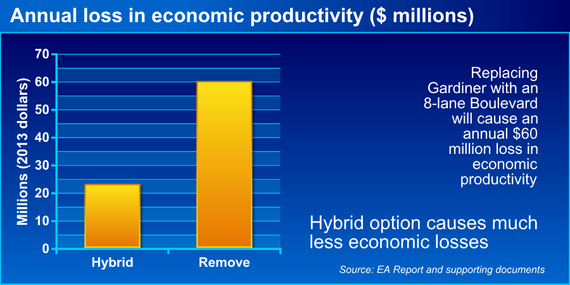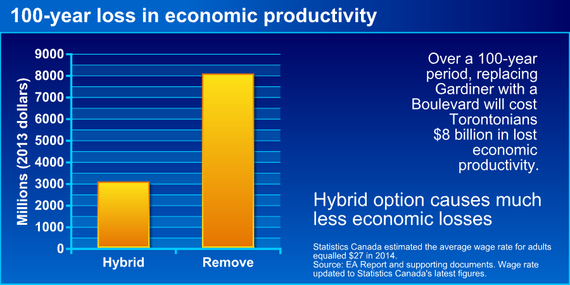DarnDirtyApe
Active Member
Everyone here knows that Tory lives at Bloor and Bedford, right?
In a building with a Starbucks, no less.
Everyone here knows that Tory lives at Bloor and Bedford, right?
There's another fudge. It's not just 5-6K commuters... that's the number per hour during rush hour. Over the course of the day, the number has been shown to be in excess of 100K.
The rush hour commutes are the only concern because the non peak hour commutes only increase by 52 seconds.
It has to be on the assumption that fewer people overall will drive... funny that this is never explicitly mentioned anywhere in the presentations though.
But he must know those motions will be studied and rejected by staff. Do these councillor that put in motion for tunneling actually think staff will come back and say yes due to the cost? So Tory must have thought he is not loosing anything by agreeing to the motionsThe reasons for discounting the U of T study are clear. The 10 minute figure assumes that there won't be an island in the middle of the blvd. Therefore pedestrians would need to cross the road in one shot, so red lights would last a lot longer. This adds 4.5 minutes on to the commute time bringing it down to a 5.5 min plus difference for the boulevard. On top of that, the trip they used is of someone driving almost the entire length of the gardiner/dvp. Few people, if anyone will drive this route. By the studies own metrics, someone driving just the east-west portion of the gardiner will only have 2 minutes added onto their commute.
You can read more about it here: http://www.thestar.com/news/city_ha...sleading.html?referrer=http://t.co/xuDD7IsVNt
All of this makes Tory's campaign for the gardiner seem incredible sleazy. Even referring to it as the "hybrid," is total bull, and all the evidence he gave for it was anecdotal, or an incorrect statistic. Not to mention, passing motions into law that he knows are terrible in order to win a few votes.
Found it. It was actually in the original EA:Wasn't there also an estimate of $37 million extra economic cost with remove, per year (for the first several years)?


City staff explained it better during question period in council. From what I remember, many motorists go out of their way to use the Gardiner even if it increases their travel distance. Here's a simple example:
View attachment 48363
In other words there are "lower vehicle kilometers travelled in the transportation system" associated with the remove option. There's also reduced traffic congestion on north-south streets because today the Gardiner on/off ramps dump a bunch of cars onto just a couple of streets, whereas the boulevard allows many more exit routes. Other than that they assume a traffic evaporation of 10% (a conservative estimate, other cities had better results). They also mentioned that the remove option has significantly less paved surfaces and allows for the planting of 1,237 more trees than the hybrid, providing 52% canopy coverage rather than 12%.
The reduced GHG associated with the remove is one of those things that is not very intuitive, which is why I prefer to rely on staff advice rather than argue with logic, gut feelings and sob stories.
No it isn't. Once you get west of Broadview, it's clear sailing. Heck, once you get past Logan it's pretty clear.Hmm... Eastern is often a disaster on that stretch during rush hour.
I can't imagine anyone taking the DVP south, onto the Gardiner, and up Sherbourne to get the Front/Berkeley area. I guess people do ... but wow ...
On a one-off maybe ... I doubt there are too many doing this on a daily basis, just for the view! But perhaps I'm just too practical.I have done this but mainly because of the better view of the skyline you get this way than via Richmond.
Makes some sense, although did they also account for higher emissions per km for city driving? My car supposedly uses 6.0L/100km on the highway and 9.0L/100km in city driving. I have some trouble believe that total vehicle km traveled would drop by more than 33% to compensate, although your example does indeed show a 36% reduction for that particular segment alone.




